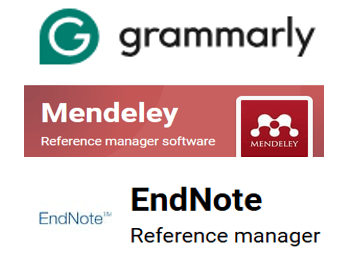Mineral Composition of Coastal Landforms in Wadi Al-Suwani at Al-Bardia Region, East of Tobruk City, Libya
DOI:
https://doi.org/10.37375/sjfssu.v4i2.2906الكلمات المفتاحية:
Wadi Al Suwani, Sabkha, Cliffs, Beach, Tobruk, Al Bardiaالملخص
This study investigates the mineralogical composition of coastal geomorphological units, including sabkhas, rock cliffs, and beach sands, along the Wadi Al-Suwani shoreline near Burdi village in east of Libya. The research aimed to characterize these landforms, focusing on their geochemical and mineralogical properties, to better understand the processes shaping this unique coastal landscape. A total of fifteen samples were collected during field trips in August and September 2022, spanning various geomorphological units such as sabkhas, rock cliffs, and beaches. X-ray diffraction (XRD) analysis revealed that intertidal sabkha sediments predominantly contain terrigenous minerals like quartz (40.7%-69.7%), microcline (34.6%-39.0%), and albite (7.7%-13.7%), with minor occurrences of carbonate minerals such as calcite (9.5%-30.6%) and dolomite (1.3%-5.4%). The supratidal sabkha sediments were primarily composed of quartz (45.7%-69.7%) and lesser amounts of microcline and calcite, while halite was notably absent. Beach sands exhibited a mineralogical profile dominated by quartz (41.2%-78.2%) and calcite (19.1%-50.4%), with traces of dolomite and hematite. In contrast, the rock cliffs of the Al-Abraq, Al-Faidiyah, and Al-Jaghbub Formations were overwhelmingly composed of calcite (83.4%-97.9%), indicative of their shallow marine origin, with minor quartz and halite content. The findings underscore the complexity of depositional processes in the region, shaped by a combination of terrigenous input, marine biogenic activity, and evaporative conditions. This research provides valuable insights into the coastal geomorphology of the Al-Bardia region, with broader implications for understanding similar coastal environments globally.
المراجع
Abdulsamad, E.O., and Barbieri, R., 1999. Foraminiferal distribution and palaeoecological interpretation of the Eocene - Miocene carbonates at Al Jabal al Akhdar (northeastLibya).Journal micropaleontology, 18: 45-65.
Abdulsamad, E.O., Bu-Argoub, F.M. And Tmalla, A.F.A.,2009. A stratigraphic review of the Eocene to Miocene rock units in the Al Jabal Al Akhdar, NE Libya. Marine Petroleum Geology,26:1228-1239.
Abdulsamad, E.O. And El Zanati, S.M., 2013. Miocene benthic foraminifera from the Soluq area, NE Libya: biostratigraphy and environmental significance. Journal of Mediterranean Earth Sciences,5:245-256.
Barr, F.T. And Hammuda, O.S., 1971. Biostratigraphy and planktonic zonation of the Upper Cretaceous Atrun Limestone and HilalShale, Northeastern Libya. In: Farinacci, A., Ed., Proceedings of the Second International Conference on Planktonic Microfossils, I:27-40. Roma: Tecnoscienza.
Barr, F.T. And Weegar, A.A., 1972. Stratigraphic Nomenclature ofthe Sirte Basin, Libya. Tripoli: Petroleum Exploration Society of Libya, 179 p
Banerjee, S., 1980. Stratigraphic Lexicon of Libya. Department of Geological Researches and Mining, Bulletin, 13:1-300.
Brown, G., 1972. The -X-ray Identification and Crystal Structures of Clay Minerals – Mineralogical Society. London
Carver, R.,1971. Procedures in Sedimentary Petrology. Wiley Interscience, London, 441.
Chao, G. Y.,1969. 2ɵ (Cu) table for common minerals: Geological.Carleton University, Ottawa, Canada,69-2.
Chen,1977. Table of key lines in X-ray powder diffraction patterns of minerals in clays and associated rocks. Department of Natural Resources. Geological Survey. Occasional paper 21. Bloomington, Indiana ,67 .
Duronio, P., Dakshe, A., and Bellini, E., 1991. Stratigraphy of the offshore Cyrenaica Libya. In: Salem, M.J., Hammuda, O.S. and Eliagoubi, B.A., Eds., e Geology of Libya, IV: 1589-1620. Amsterdam: Elsevier.
El Hawat, A.S. and Abdulsamad, E.O. (2004). The Geology of Cyrenaica: A Field Seminar. Geology of East Libya, Field Trip, ESSL, Tripoli, Libya, 130 .
El-Hawat, A.S. And Shelmani, M.A., 1993. Short notes and guidebook on the geology of Al Jabal al Akhdar. Earth Sciences Society of Libya (ESSL), Special Publication: 1-70.
El Khoudary, R.H., 1976. Contribution to the stratigraphy and micropaleontology of Jabal Al Akhdar: Upper Eocene planktonic foraminifera from Wadi Bakur, SE Tukrah, NE Libya. Libyan Journal of Science, 6B: 57-79
Elwerfalli, A., Muftah, A., and El-Hawat, A.S., 2000. Aguidebook on the geology of Al Jabal al Akhdar. Earth Sciences Society of Libya (Essl). 1-71.
Eliagoubi,B.A.,and Powell, J.D.,1980. Biostratigraphy andpalaeoenvironment of Upper Cretaceous foraminifera of North-central and Northwestern Libya. In: Salem, M.J. and Busrewil, M.T.,Eds., Geology of Libya, I:. London: Academic Press.137-153.
Folk, R.,1968. Petrology of Sedimentary Rocks. Hemphil Pub. Co., Austin, Texas, 184 .
Fookes, P. G., French, W. J., and Rice, S. M. M. 1985. The influence of ground and groundwater geochemistry on construction in the Middle East. Quarterly Journal of Engineering Geology and Hydrogeology, 18 (2), (101-127).
Kinsman, D. J.,1969. Modes of formation, sedimentary associations, and diagnostic features of shallow- water and supratidal evaporation. Bull. Am. Ass. Petrel. Geol. Vol 53 (4), 830-840.
Klen, L., 1974. Geological map of Libya, 1:250 000. Sheet Benghazi (NI 34-14). Explanatory booklet, Industrial Research Centre, Tripoli: 56 .
Masoud. A. M. M.,2020. Sedimentological and Environmental Studies on the Shore Zone of Tobruk City, Libya. Unpublished M.Sc. Thesis, Mansoura University, Egypt, 162.
Milliman, J.,1974. Marine Carbonates. Springer-Verlag, New York, 375 .
Prudêncio, M. I., Gonzalez, M. I., Dias, M. I., Galan, E., and Ruiz, F., 2007. Geochemistry of sediments from El Melah lagoon (NE Tunisia): a contribution for the evaluation of anthropogenic inputs. Journal of Arid Environments, 69 (2), 285-298.
Sanford, W. E., and Wood, W. W.,2001. Hydrology of the coastal sabkhas of Abu Dhabi, United Arab Emirates. Hydrogeology Journal, 9 (4), 358-366.
Tucker, M.,.1988. Techniques in Sedimentology. Blackwell Scientific Pub., 383.
Warren, J. K.,2000. Dolomite: occurrence, evolution, and economically important associations. Earth-Science Reviews. Volume 52, Issues 1–3, November 2000, 1-81.
Wang, X., H. Wei, F. Khormali, M. Taheri, M. Kehl, M.Frechen, T. Lauer, F. Chen. ,2017. Grain-size-distribution of Pleistocene loess deposits in northern Iran and its palaeoclimatic implications. QuaternaryI nternational, 429, 41-51.
Yanilmaz, E.,Huffman, D., Martin, M. And Gutteridge, P., 2008. Facies analysis and depositional systems of defined sedimentary sequences from Precambrian to Late Miocene in NE Libya.In: Salem, M.J., Ed., Geology of East Libya, VI. Malta: Gutenberg Press Ltd., 3–84.
ZERT, B., 1974. Geological map of Libya, 1:250 000. Sheet Dernah (NI34-16). Explanatory booklet, Industrial Research Centre, Tripoli: 49.
التنزيلات
منشور
كيفية الاقتباس
إصدار
القسم
الرخصة
الحقوق الفكرية (c) 2024 المجلة العلمية لكلية العلوم

هذا العمل مرخص بموجب Creative Commons Attribution 4.0 International License.














